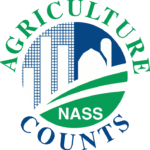Apr 11, 2019Older farmers, fewer middle-size farms in new ag census
Farmers and ranchers are older, on average, than in the past and there are fewer middle-size farms, according to results of a USDA census.
USDA released on April 11 results of the 2017 Census of Agriculture. The results span 6.4 million new points of information about America’s farms and ranches and those who operate them, including new data about on-farm decision making, down to the county level.
Both farm numbers and land in farms have ongoing small percentage declines since the last Census in 2012 according to data collected from farmers by the USDA’s National Agricultural Statistics Service (NASS). At the same time, there continue to be more of the largest and smallest operations and fewer middle-sized farms. The average age of all farmers and ranchers continues to rise.
“While the current picture shows a consistent trend in the structure of U.S. agriculture, there are some ups and downs since the last Census as well as first-time data on topics such as military status and on-farm decision making,” NASS Administrator Hubert Hamer said in a news release.


Census data provide valuable insights into demographics, economics, land and activities on U.S. farms and ranches. Some key highlights include:
- There are 2.04 million farms and ranches (down 3.2% from 2012) with an average size of 441 acres (up 1.6%) on 900 million acres (down 1.6%).
- The 273,000 smallest (1-9 acres) farms make up 0.1% of all farmland while the 85,127 largest (2,000 or more acres) farms make up 58% of farmland.
- Just 105,453 farms produced 75% of all sales in 2017, down from 119,908 in 2012.
- Of the 2.04 million farms and ranches, the 76,865 making $1 million or more in 2017 represent just over 2/3 of the $389 billion in total value of production while the 1.56 million operations making under $50,000 represent just 2.9%.
- Farm expenses are $326 billion with feed, livestock purchased, hired labor, fertilizer and cash rents topping the list of farm expenses in 2017.
- Average farm income is $43,053. A total of 43.6% of farms had positive net cash farm income in 2017.
- Ninety-six percent of farms and ranches are family owned.
- Farms with Internet access rose from 69.6% in 2012 to 75.4% in 2017.
- A total of 133,176 farms and ranches use renewable energy producing systems, more than double the 57,299 in 2012.
- In 2017, 130,056 farms sold directly to consumers, with sales of $2.8 billion.
- Sales to retail outlets, institutions and food hubs by 28,958 operations are valued at $9 billion.
For the 2017 Census of Agriculture, NASS changed the demographic questions to better represent the roles of all persons involved in on-farm decision making. As a result, in 2017 the number of producers is up by nearly seven percent to 3.4 million, because more farms reported multiple producers. Most of these newly identified producers are female. While the number of male producers fell 1.7% to 2.17 million from 2012 to 2017, the number of female producers increased by nearly 27% to 1.23 million. This change underscores the effectiveness of the questionnaire changes.
Other demographic highlights include:
- The average age of all producers is 57.5, up 1.2 years from 2012.
- The number of producers who have served in the military is 370,619, or 11 % of all. They are older than the average at 67.9.
- There are 321,261 young producers age 35 or less on 240,141 farms. Farms with young producers making decisions tend to be larger than average in both acres and sales.
- More than any other age group, young producers make decisions regarding livestock, though the difference is slight.
- One in four producers is a beginning farmer with 10 or fewer years of experience and an average age of 46.3. Farms with new or beginning producers making decisions tend to be smaller than average in both acres and value of production.
- Thirty-six percent of all producers are female and 56% of all farms have at least one female decision maker. Farms with female producers making decisions tend to be smaller than average in both acres and value of production.
- Female producers are most heavily engaged in the day-to-day decisions along with record keeping and financial management.
Results are available in many online formats including video presentations, a new data query interface, maps, and traditional data tables. To address questions about the 2017 Census of Agriculture data, NASS will host a live Twitter chat (@usda_nass) Ask the Census Experts #StatChat 1 p.m. eastern standard time Friday, April 12. All information is available at www.nass.usda.gov/AgCensus.















